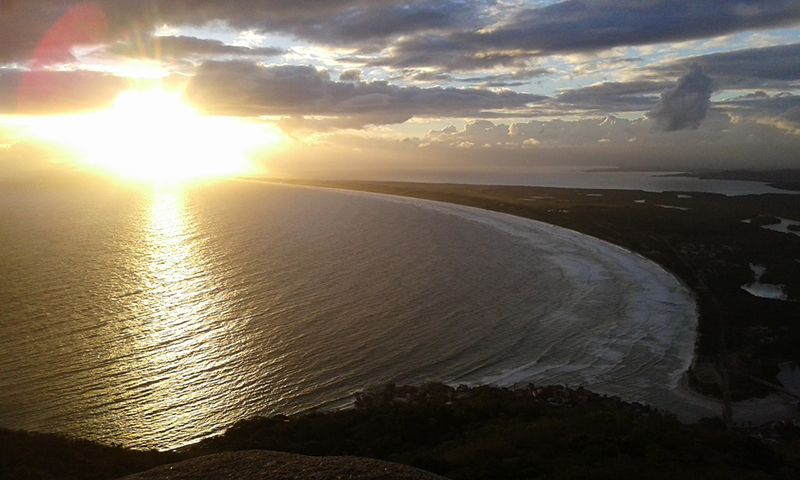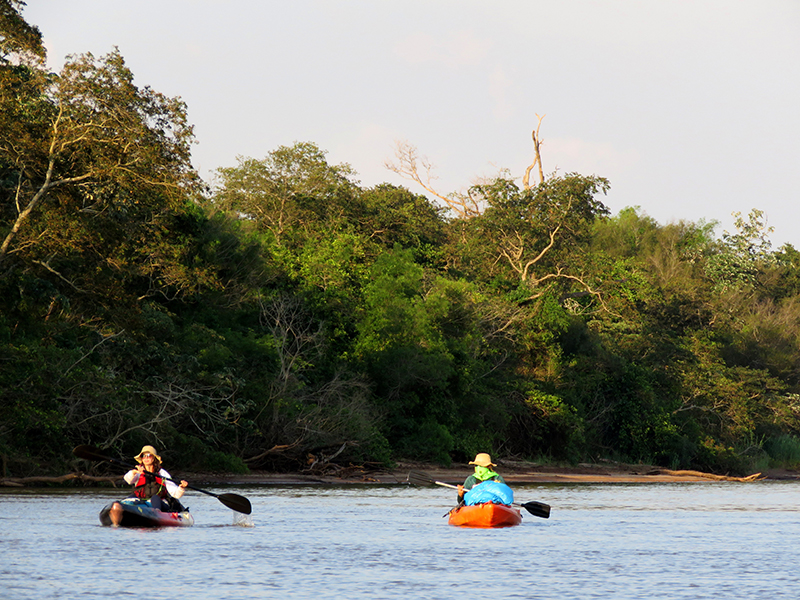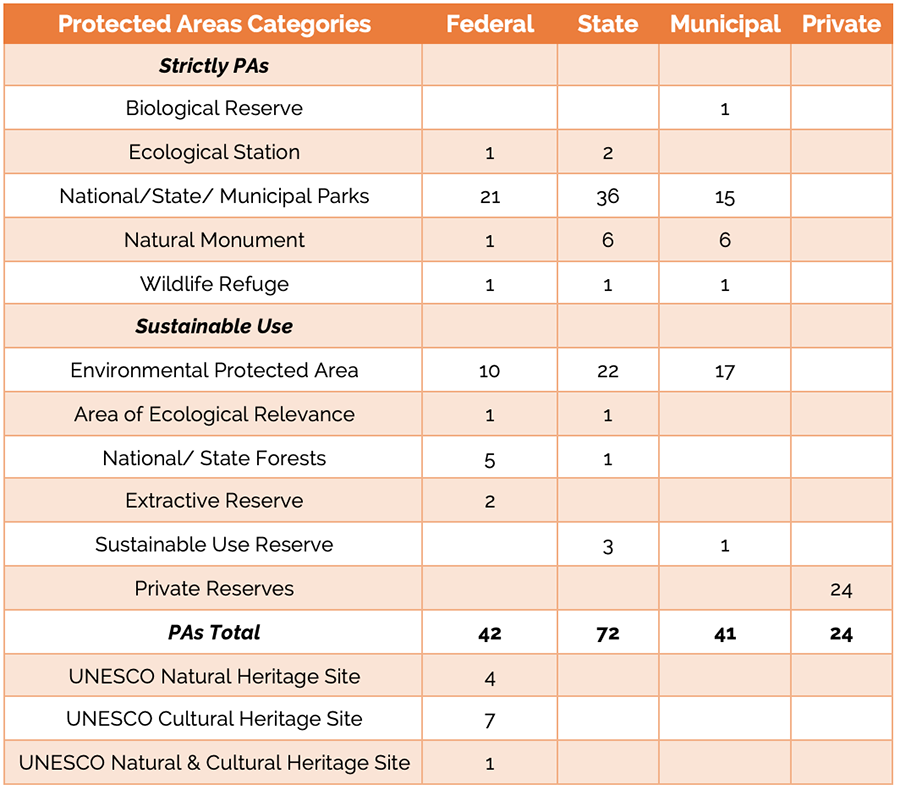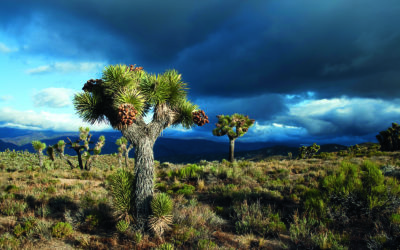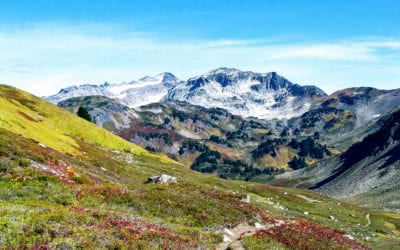Transmantiqueira, a thousand-kilometer-Long Distance Trail in southeastern Brazil. Photo by Hugo Castro.
The evolution of long-distance trails in Brazil and future perspectives
International Perspectives
August 2020 | Volume 26, Number 2
Brazil’s long-distance trails (LDT) are the descendants of historical routes of travel for indigenous peoples that date back thousands of years. There is evidence of trails that connected the southeastern coast of Brazil to Peru, central Chile, and southern Colombia, totaling nearly 30,000 km. Along the Brazilian coast, indigenous peoples occupied wide regions with millions of inhabitants, who moved along the coast by means of extensive trails, which have now transformed into highways (Dean 1995). Many of these historic trails are being recovered for tourism and recreation through the accelerated expansion of the LDT movement in Brazil.
Brazil’s LDT movement started in the 1990s, seventy years later than the United States’ proposal of the Appalachian Trail. The first long-distance trail, Transcarioca Trail of Rio de Janeiro, has been expanding with the involvement of trail enthusiasts and protected area managers. LDTs are a form of integration and a tool for the conservation of natural areas (Yahner et al. 1995; Dufour and Crisfield 2008), as well as an excellent opportunity for recreation and promoting place attachment and economic development, particularly in the most remote areas (Pollock et al 2012).
Nature tourism has been growing rapidly in Brazil, especially in national and state parks. In the last decade, some parks have doubled or tripled the number of visitors, but visitation is still concentrated in a few areas. In addition, to encouraging visitation, Brazilian LDTs have motivated stewardship and collaboration among hiking groups, protected area managers, tour operators, tourist secretaries from the municipalities, NGOs, and universities to collectively implement and manage the trails in the different regions of the country. Largely, LDTs are a bottom-up movement and now are established in the sphere of public policies at the federal level.
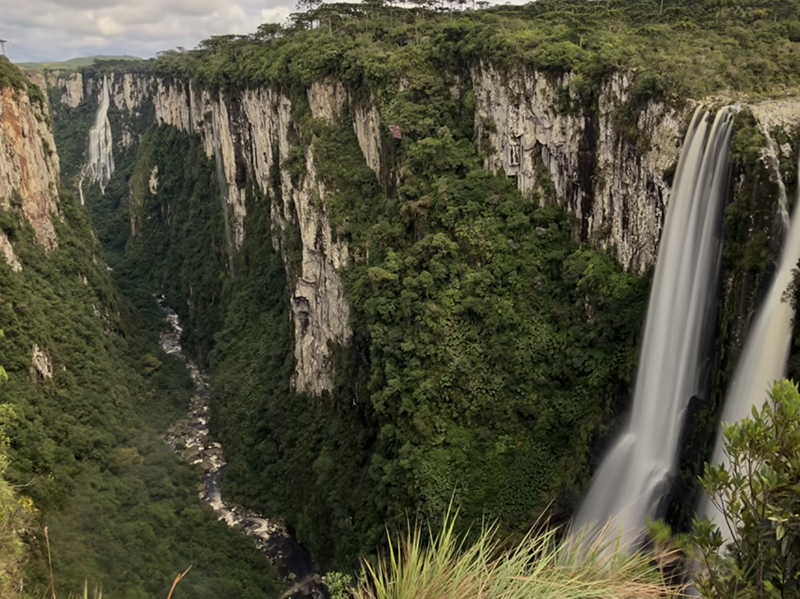
Figure 1 – Aparados da Serra National Park, where one of the most classic “traverses” in Brazil, the Travessia dos Canyons exist since the 1980s. Photo by Fernando Tatagiba.
The involvement of various sectors at the local and regional levels through the process of planning, design, and implementation have stimulated place-based connections to the trails and protected areas. Additionally, small towns experiencing economic stagnation and high rates of rural exodus have benefited from LDT visitation, stimulating small businesses in accommodation, transportation, and food services. Thus, local residents and protected area managers tend to cultivate a sense of pride and belonging towards the LDTs and long-term support for conservation and nature. This paper presents an overview of the history and the current network of LDTs in Brazil, as well as the network of protected areas and sites of historical and cultural heritage in which they are nested. In addition, the national system and standardization of LDTs is discussed along with perspectives for the future management and development of Brazilian LDTs.
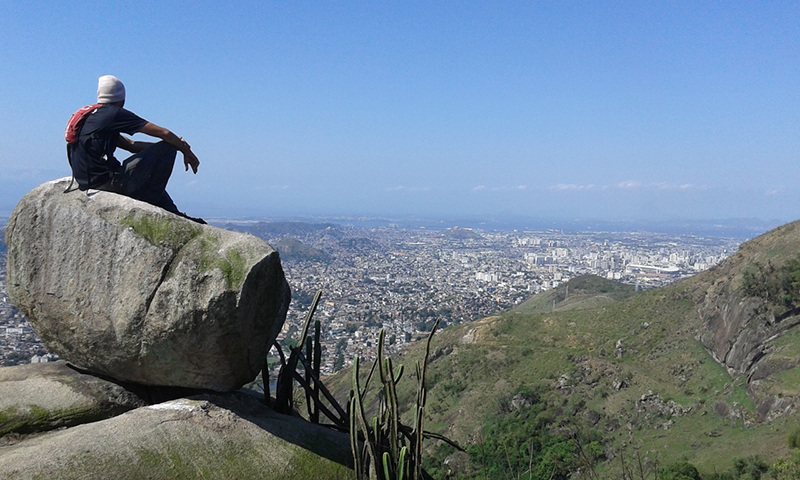
Figure 2b – Central section of the Transcarioca Trail, in the Pedra Branca State Park, municipality of Rio de Janeiro, Brazil. Photos by Pedro da Cunha e Menezes.
Evolution of Brazilian Long-Distance Trails
The traverses or “travessias,” equivalent to local or regional LDTs, have existed for decades within Brazil’s national parks (Figure 1). The 1990s jumpstarted the current movement of regional and national LDTs through the birth of the Transcarioca Trail. The network of trails in the city of Rio de Janeiro began to grow (Cunha e Menezes 1996; 1998), connecting semi-deserted beaches to the west of the city to internationally known tourist spots such as Pão de Açúcar and Corcovado (Figure 2). Despite the lack of resources, the head of Tijuca National Park and several partners from different sectors of society implemented the first 45 km of the trail with an intense effort (Cunha e Menezes 2000).
Between 2000 and 2010, without social mobilization and government support, the movement was relatively dormant. In the early 2010s, trail activity resumed with the support of large NGOs, governments, protected area managers and thousands of volunteers that resulted in the expansion of another 100km of the Transcarioca Trail. In the last decade, LDTs movement has grown exponentially in Brazil (Figure 1).
Many protected areas managers realized the potential of increased visitation with the valuation of protected areas and nature conservation that can extend to LDTs. Partnerships with the tourism sector and with hiking groups has also increased throughout Brazil with LDTs as the catalyst. There is currently a network that encompasses about 50 regional LDTs, totaling almost 8,000 km of planned trails and more than 2500 km of trail implemented in the different regions and biomes of the country (Figure 3).
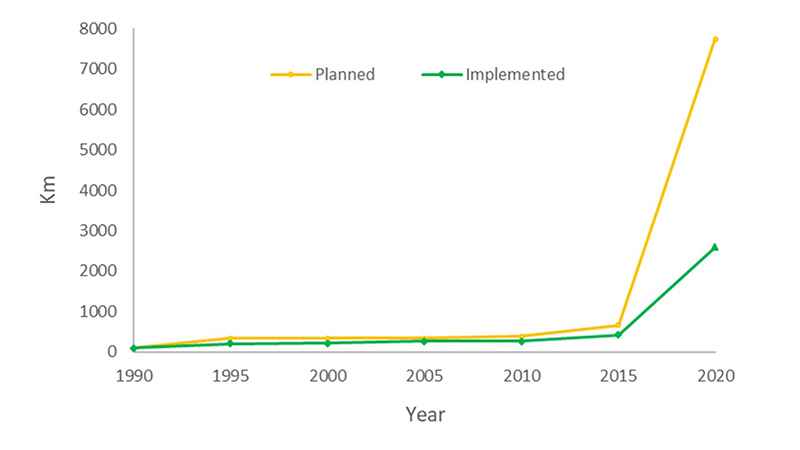
Figure 3 – Evolution of Long-Distance Trails in Brazil. Few local LDTs, called “travessias” or traverses, existed in some National Parks until the second half of the 20th century. In 2010 and mainly after 2015, the movement to create LDTs grew at an accelerated rate, despite the fact that implementation is growing at a slower pace than planning new trails.
Local, Regional and National LDTs
Brazilian LDTs are designed to be nested across three complementary scales (local, regional, national). The different scales of LDTs are based on l length: (1) national LDTs cover a thousand kilometers or more; (2) regional LDTS range from a dozen to hundreds of kilometers; and (3) local LDTs cover tens of kilometers. Many of these first traverses, or local LDTs, are being connected to regional LDTs and together form the national LDTs. These three scales serve short, medium, and long visitation. Local LDTs accommodate multi-day visits, regional LDTs accommodate multi-week visits, and national LDTs accommodate multi-month or a few successive visits.
Some regional LDTs have emerged and are highly visited, such as the Cora Coralina Trail, in Central Brazil. This trail is an old “bandeirantes” (group of pioneers and explores) path, from the 18th century. Established in 2015, the trail encompasses 300km connecting three state parks, bridging natural and cultural heritage in the experience. Brazilian LDTs have diversified in terms of landscapes, biomes and contexts. Currently, there are even aquatic LDTs, such as the Rota dos Pioneiros, which has been used historically by Indians, Spaniards, Jesuits, Bandeirantes and migrants over the centuries. This aquatic trail accessed by canoe or kayak, transcends more than 400 km through three biomes, of which about 100km are already signposted (Figure 4).
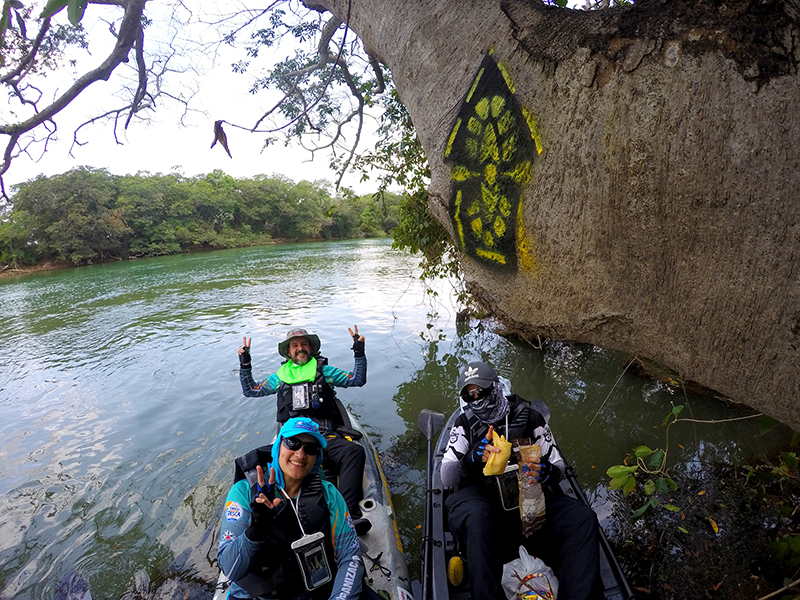
Figure 4a&b – Visitors in the Ilha Grande National Park, at the Aquatic LDT Rota dos Pioneiros, in central and southern region of Brazil. Photos by Erick Xavier.
The implementation of the LDTs has been carried out by groups of volunteers, who start with an existing trail in a protected area or recovering part of a historic trail. The process often begins with small local trails connected to other protected areas through other parts of the landscape. The scoping phase includes field excursions, intense mapping, and dialogue with private landowners, managers, and the tourist trade. Eventually, the fragments of trails start to form a connected LDT. Although there has been a lot of progress in recent years, there remains a lot of work to build a functioning national LDT network in Brazil.
Standardized Signage and Regional Identity
The recent expansion of the Brazilian LDTs network in the last five years, and the collective work of diverse partners and social networks, has advanced the standardization of the symbols and signage of Brazilian LDTs. The publication of the Trail Signaling Manual (ICMBio 2018a), provided guidelines and best practices for signage. The visual symbol is a yellow footprint on a black background. Each regional LDT designs its own “footprint”, according to the regional identity of each trail, valuing some aspect of local, cultural or natural heritage. Many regional footprints highlight charismatic, endemic or endangered species, other cultural attributes, activities, or the landscape (Figure 5). The intense voluntary work in the early stages of planning the trail and the definition of the footprint design contributed to the cohesion and sense of belonging for the groups involved in LDTs. This simple and unique symbol has created a sense of group cohesion between the participants and helped to establish a brand of LDT trails in Brazil, that is easily recognizable worldwide.
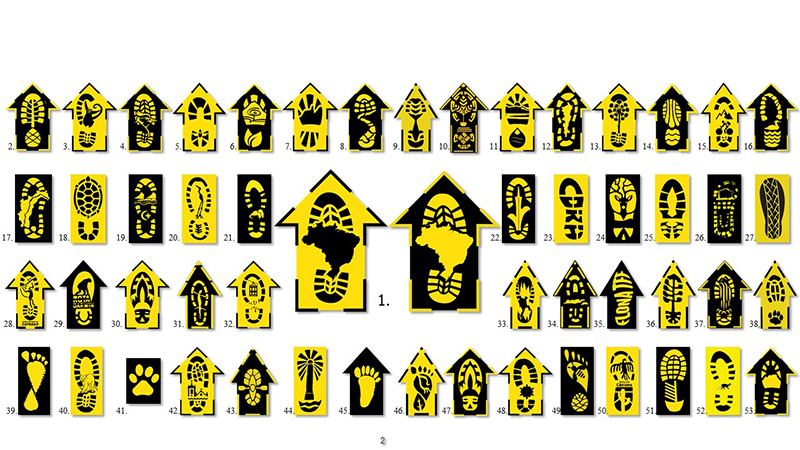
Figure 5 – Standardized signaling from the Brazilian Long Distance Trail Network (LDTs), all LDTs follow the same signaling pattern, although each regional LDTs has its own identity: 1.Rede Brasileira de Trilhas de Longo Curso; 2. Trilha Transmantiqueira; 3. Roteiro de Observação de Primatas; 4. Trilha da Gralha Azul; 5. Trilha Transcarioca; 6. Trilha da Cachoeira Formosa; 7. Caminhos da Serra do Mar; 8. Caminhos de Mambucaba; 9. Caminhos da Baleia Franca; 10. Rota do Guarumã; 11. Trilhas da APA da Baia Negra; 12. Trilha Transfloripa; 13. Trilha Transespinhaço; 14. Rota das 10 Cachoeiras; 15. Travessia dos Estados; 16. Trilha Ovo do Pato; 17. Trilha Velho Chico; 18. Caminhos do Rio Negro; 19. Trilha dos Canoeiros; 20. Trilha do Arco do André; 21. Rota do Rio Areias; 22. Caminhos do Planalto Central; 23. Caminhos de Cora Coralina; 24. Caminho dos Veadeiros; 25. Trilha das UCs do NGI ICMBio Palmas; 26. Caminho Saint Hilaire; 27. Giro dos Povoados; 28. Trilha do Muriqui; 29. Rota Darwin; 30. Caminho dos Canoeiros (Veadeiros); 31. Trilha do Parque Nacional de Sete Cidades; 32. Trilhas do Parque Nacional de Ubajara; 33. TransDiabo; 34. Trilha do Platô do Monte Roraima; 35. Trilhas da Flona Tefé; 36. Caminho das Araucárias; 37. Trilhas Cachoeiras de Macacu; 38. Trilha Interparques; 39. Caminhos da Flona de Brasilia; 40. Trilha Grande Sertão; 41. Corredeiras do Uruá; 42. Caminhos da Costa Verde; 43. Trilhas da Ilha Grande e Lagoa Xambre; 44. Rota dos Faróis; 45. Trilha das cachoeiras do PESA; 46. Caminho do Vale das Águas; 47. Rota das Transições; 48. Trilha Pedra dos Amigos; 49. Rota da ARIE das Abelhas; 50. Trilha dos Cânions; 51. Trilha Chico Mendes; 52. Trilhas do Parque Estadual do Ibitipoca; 53. Travessia do Tabuleiro
Brazilian Government and National System
The federal agency for protected areas, the Chico Mendes Institute for Biodiversity Conservation (ICMBio), has been pressured in the past couple of years to implement LDTs in federal protected areas as an important tool for conservation, integration, and generating economic benefits. Thus, the federal government began to structure a National System of LDTs with consideration of other international LDTs to minimize challenges and replicate the successes that can be adapted to the Brazilian context (Souza 2018).
An integrated effort was made between the Ministry of Tourism, Ministry of the Environment, and ICMBio through a Joint Federal Ordinance No. 407 in 2018, which instituted the “National Network of Long-Distance and Connectivity Trails – RedeTrilhas.” This network helps to establish and support LDTs through public policy and aims to:
- promote long-distance trails as an instrument for biodiversity conservation and landscape connectivity;
- recognize and protect pedestrian routes and other non-motorized means of travel of natural, historical and cultural interest;
- sensitize society about the importance of connecting natural landscapes and ecosystems,
- promoting active participation in the implementation of the National System of Protected Areas;
- valuing voluntary work in establishing long-distance trails;
- expand and diversify the tourist offer, in order to stimulate tourism in natural areas.
The Ordinance supports the establishment of a governance body for each LDT to be composed of government and civil society entities, taking advantage of existing governance structures such as Biosphere Reserves, Mosaics of Protected Areas, Heritage Sites, Ecological Corridors, Tourist Regions of the Tourism Regionalization Program.
A new guideline, Regulatory Ordinance of RedeTrilhas (MMA 2019), will define the criteria for integrating the trails, the governance model, and the signaling model, among other regulatory measures. The LDTs in Brazil were born from a bottom-up movement; therefore, it is understood that the government’s role is to encourage the involvement of civil society and avoid restrictions that could impede initiatives. Therefore, more robust legislation must be established, with defined roles of the entities involved in LDTs and the parameters for the development and implementation of a National System of LDTs.
Linking Landscapes, Biodiversity and Culture
Brazilian LDTs are being designed to integrate historical, cultural, and natural values in their routes. Naturally, the strengths of the trails are the scenic and wild landscapes often within Protected Areas (ICMBio 2018b). Thus, seeking to leverage LDTs as tools for landscape conservation, the LDT route must link the core areas (i.e. protected areas) and serve as an ecological corridor, connecting landscapes across territories.
Since the 1990s, the ecological corridors strategy has been implemented in Brazil with the objective of forming large connected landscapes, including several categories of protected areas and broader landscapes outside protected areas that support nature conservation and flow of biota over vast areas (Ayres et al. 2005; Anderson and Jenkins 2007). However, there has been limited advancement due to the low adherence from different societal sectors. The growth of nature-based tourism worldwide, and particularly in Brazil, offers a strategy for LDTs to combine visitation to promote sustainability and conservation along vast corridors.
Protected areas play a major role in LDTs as they are attractions for recreation and tourism in addition to housing rich and endemic biodiversity. The Brazilian LDT network includes several types of protected areas (Table 1). Parks are the most frequent category with a large contribution from state parks, followed by national and municipal parks. According with IUCN protected areas categories for strict protection, Natural Monuments are also prevalent (Table 1). In the IUCN categories for sustainable use in protected areas, the Environmental Protection Areas (APA) are most frequently found in addition to National and State Forests, Extractive Reserves and Sustainable Development Reserves.
Some LDTs transcend other areas with great cultural and historical populations, such as the Indigenous Lands and Quilombola (Marron) Territories; however, their intersection with LDTs has not yet been mapped. Private Natural Heritage Reserves (RPPNs) contribute to Brazilian LDTs and it is important to highlight that LDTs pass through several other rural properties. Although these areas are not declared as RPPNs, their owners often support the promotion of nature tourism and conservation practices of natural or rural landscapes. It should be noted that the number of protected areas is likely greater than what is displayed in Table 1 considering that the identification of the trail paths and compilation of data is still in progress.
In addition to protected areas, LDTs encompass places of global importance, such as sites recognized as a World Heritage Site by UNESCO. LDTs pass through historical cities, such as Ouro Preto, or modern cities, such as Brasília or Rio de Janeiro. Some LDTs cross country borders and others integrate culture with biodiversity as in Chapada dos Veadeiros in the Brazilian Savanah or Paraty and Ilha Grande, in the Atlantic Forest. Using LDTs as tools for enhancing the natural and cultural values of protected areas and beyond can help support the conservation and celebration of Brazil’s cultural and natural wealth.
Management Considerations
Brazilian LDTs are still in their infancy, but with collaborative efforts across scales, they are expanding rapidly. This movement has brought together partners from different sectors of society, volunteers, managers and staff from protected areas, associations of different recreationists, tourism entrepreneurs, local, regional and federal governments around a common goal to establish and grow a network of LDTs in Brazil. Based on US Forest Service (2007) guidelines and our experience, we identify ten different phases for LDT development (Table 2). Development and growth in these different phases represent many of the pressing management challenges for LDT development.
Given the recent movement for expanding LDTs, stakeholders are motivated to plan and define routes. Together with the proliferation of social media use, there is an accelerated rush to establish new LDTs. However, some challenges include financing, maintenance of trails, monitoring of users and impacts, and biophysical conditions of the trails. There is also limited infrastructure for support services such as accommodation, food, and transportation.
Most of these trails pass through remote locations, where the infrastructure to receive visitors is almost nonexistent. The parks have basic facilities for overnight accommodations, such as campgrounds for a limited number of people. However, it is difficult to find appropriate supply points, lodging options, food services, and transportation of hikers to different access points on the trails. Although small businesses are emerging, these communities are lacking resources and capacity. It is critical that governments, trade and tourism organizations, and educational institutions offer support and training for these services. Additionally, there are already reports of problems related to waste management and erosion of trails. Thus, monitoring for impacts needs to be integrated into LDT planning and management to mitigate negative impacts and allow for adaptive management actions.
Perspectives for Future Management of Brazilian LDTs
There are many challenges facing the development of LDTs in Brazil. Due to the transboundary nature of LDTs, it is necessary to strengthen collaboration between sectors of society and the different scales of government. Although it is a bottom-up movement, government support is essential to encourage permits and specific services for LDTs, such as access to areas, waste management, maintenance of trails and infrastructure, and also to facilitate the development of support services and small businesses. Entrepreneurs require stronger capacity to diversify opportunities and increase quality of their services and products. Local associations and user groups should support protected areas and other core areas and help facilitate dialogue among key stakeholders and mobilize more volunteers to support trail stewardship for the trail and resources. Researchers and managers should work together, and with visitors to monitor, understand, inform and engage the society and decision makers about the LDTs and their benefits (Dufour and Crisfield 2008).
Research on nature-based tourism in Brazil is very limited (Cunha et al. 2018) and almost nonexistent for LDTs. There is limited understanding of use for LDTs; therefore, basic research on user counts and demographics, trail use patterns, user motivations and perceptions are greatly needed. There is also a need for understanding volunteers and stewardship activities for LDTs in addition to the economic aspects of businesses and infrastructure for LDTs. There are many key questions to explore:
- What is the supply and demand for different services and products?
- What are the bottlenecks and challenges for socio-productive inclusion?
- How do LDTs promote the connection and restoration of habitats for different species of fauna and flora?
- What are the social and environmental impacts of LDTs?
- How do LDTs influence changes in hikers’ health, relationship with nature, attitudes of protected areas, etc.?
While LDTs can be a powerful tool for the promotion of tourism and for nature conservation, LDTs are also an opportunity for research and training for managers, universities, and professionals from different sectors.
All these actors should pursue the valuation and support of the cultural, historical, and environmental attributes throughout the LDTs, thinking not only of increasing and diversifying the flow and types of visitors, but designing LDTs for transformative experiences and the conservation and celebration of biodiversity and the culture in the diverse Brazilian landscapes. The trail ahead for Brazil’s LDTs is long and challenging, but also ripe with opportunity and enthusiasm.
Acknowledgments
To the members of the Rede Brasileira de Trilhas, in particular to C. Silva and D.B. Melo. To the managers of protected areas and all those who help to spread the LDT initiative in Brazil with a view to bringing people closer to nature and the conservation of biodiversity and the Brazilian culture. The Community of Practice on Visitation in Protected Areas in Brazil. To the editors and reviewers of IJW for the invitation and comments on the preliminary versions of this article.
About the Authors
ANDRÉ A. CUNHA is a professor at University of Brasília, Dept of Ecology; Center for Tourism Studies; and Center for Advanced Studies of the Cerrado; email: cunha.andre@gmail.com
HUGO DE CASTRO PEREIRA is the president of the Brazilian Trails Network Association and General Coordinator of the Transmantiqueira Trail; email: hugodcp@gmail.com
BERNARDO ISSA DE SOUZA is environmental analyst in Instituto Chico Mendes de Conservação da Biodiversidade (ICMBio), the Brazilian institute for protected areas; email: bernardo.souza@icmbio.gov.br
JULIO CESAR MEYER JUNIOR is a member of the environmental organization in the state of Pará, Brazil and a member of the Board of Directors of the Brazilian Trail Network Association; email: juliocvet@gmail.com
PEDRO DA CUNHA E MENEZES is a career diplomat and a member of the board of directors of the Brazilian Trails Network Association; email: cunhaemenezes@gmail.com
References
Anderson, A. B. and C. N. Jenkins. 2006. Applying Nature’s Design: Corridors as a Strategy for Biodiversity Conservation. Columbia University Press.
Ayres, M., G. A. B. Fonseca, A. B. Rylands, H. L. Queiroz, L. P. S. Pinto, D. Masterson, and R. B.
Cavalcanti. 2005. Os corredores ecológicos das florestas tropicais do Brasil. Belém: Sociedade Civil Mamirauá.
Cunha, A .A.. T. C. Magro, and S. McCool (org). 2018. Tourism and Protected Areas in Brazil: Challenges and Opportunities. New York: Nova Publisher.
Cunha e Menezes, P. 1996. Trilhas do Rio. Rio de Janeiro: Editora Salamandra.
Cunha e Menezes, P. 1998. Novas trilhas do Rio. Rio de Janeiro: Editora Sextante.
Cunha e Menezes, 2000. Transcarioca. Todos os passos de um sonho. Rio de Janeiro: Editora Sextante.
Dean, W. 1995. With the broadax and Firebrand: the history of destruction of the Brazilian Atlantic Forest. Berkeley: University of California Press.
Dufour, C. and E. Crisfield. 2008. The Appalachian Trail MEGA-Transect. Harpers Ferry, WV: Appalachian Trail Conservancy.
ICMBio. 2018a. Manual de sinalização de trilhas. Brasília: Instituto Chico Mendes de Conservação da Biodiversidade – ICMBio
ICMBio 2018b. Travessias – Uma Aventura Pelos Parques Nacionais do Brasil. Brasília: Instituto Chico
Mendes de Conservação da Biodiversidade – ICMBio.
MMA. 2019. Brasil organiza sistema de trilhas para reforçar ecoturismo. https://www.mma.gov.br/informma/item/15643-normatiza%C3%A7%C3%A3o-da-rede-trilhas-deve-sair-em-novembro.html
Pollock, N., L. Chase, C. Ginger, and J. Kolodinsky. 2012. The Northern Forest Canoe Trail: economic impacts and implications for community development, Community Development 43: 244-258.
Souza, B. I. de. 2018. Trilhos de longo percurso: Interfaces com a gestão das unidades de conservação no Brasil. https://comum.rcaap.pt/handle/10400.26/30146
United States Forest Service. 2007. Equestrian Design Guidebook for trails, trailheads, and campgrounds. Missoula: U.S. Department of Agriculture, Forest Service.
Yahner, T.G,, N. Korostoff, T. P. Johnson, A. M. Battaglia, and D. R. Jones. 1995. Cultural landscapes and landscape ecology in contemporary greenway planning, design and management: a case study. Landscape and Urban Planning 33: 295-316.
Read Next
Foundation and Future of Long Distance Trails
We begin this special edition of the International Journal of Wilderness with references to the U.S. Wilderness and National Trails System Acts to illustrate the significance and interconnectedness of wilderness areas and long-distance trails.
With Collaboration We Can Overcome Challenges Together
The concepts of “shared stewardship” or “collaborative management” can be challenging. They require shared vision, definition of clear roles and responsibilities, and commitment to the collaborative process.
Shared Stewardship and National Scenic Trails: Building on a Legacy of Partnerships
National Scenic Trails connect people with the natural and cultural heritage of the United States. Theses trails also provide important opportunities for agencies to engage partners in trail stewardship and sponsorship.

